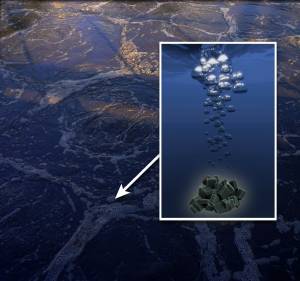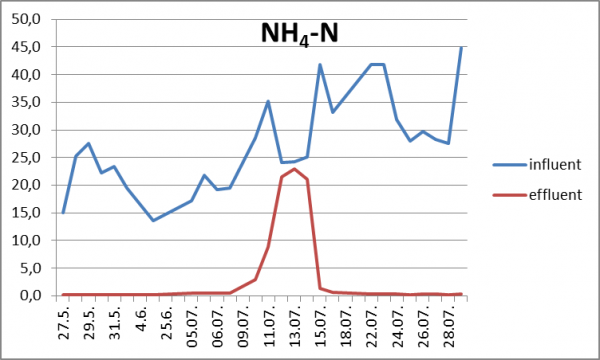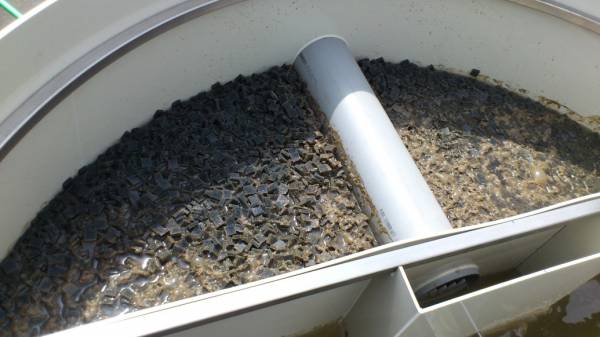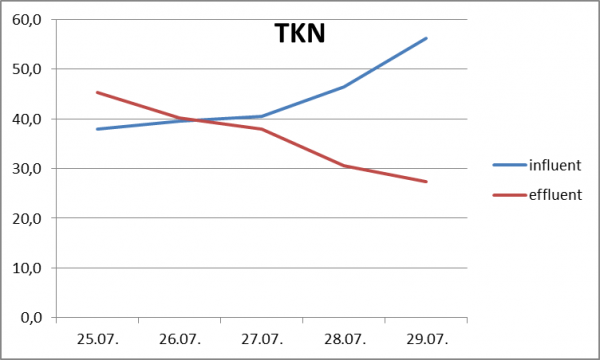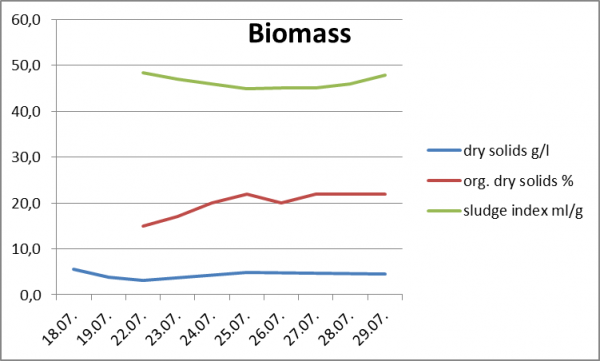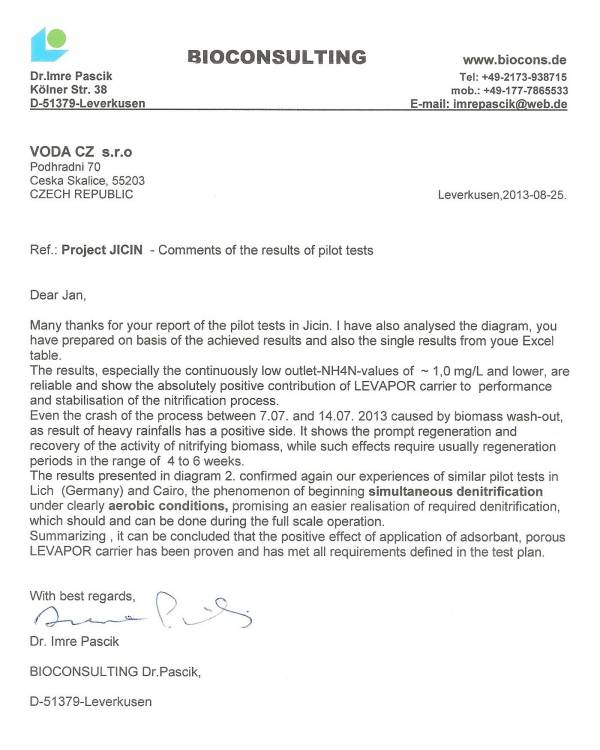Pilot test of the WWTP Jičín
Verification of LEVAPOR carrier functionality
In Česká Skalice : 14 August 2013
Authors: Miroslav Bůžek, Jan Beran; VODA CZ s.r.o.
Aims:
1. Verification of improved equalizing ability of sludge suspension and verification of the nitrification efficiency increase.
1. Verification of improved equalizing ability of sludge suspension and verification of the nitrification efficiency increase.
3. Increase of total sludge concentration in biological treatment and the sludge age increase as well; reduction superfluous sludge production.
We will put the accent on assessment of shock load of the WWTP by ammonia from sludge management. Results of pilot operation will be used for lower operating costs calculation (electricity saving and reduction of superfluous secondary sludge production).
The pilot testing will be carried out using a model of real WWTP in a ration of 1:1500 for Levapor carriers efficiency testing.
Operation of WWTP Jičín was chosen for testing, because there is a possibility for further application of biocarriers into real WWTP operation. In spite of very good operation and efficiency of WWTP Jičín in general, we can reach significant economical effects using the above mentioned biocarriers. Technological measures will be taken, which will ensure the increase of operational costs saving. It means to use the sludge regeneration tank for potential accumulation of sludge liquor from the sludge end and connect the pipeline of the return sludge directly to denitrification area. We can also count on particular saving related to coagulant dosing.
Based on previous experience, the WWTP model with activation capacity 1.844 m3
, filled with square LEVAPOR carriers (20x20x7 mm), and total capacity 0.228 m3 (13 capacity % of activation) was designed.
Procedure of the test:
- Installation of PP model including pumping of sewage water from end zone of primary sedimentaion was done on 23 May 2013.
- On 25 May 2013, activated sludge was pumped from large activation part of the WWTP and wastewater pumping was put in operation (for period of 2 days before the model got stabilized),
- On 28 May 2013 biocarriers application, the biocarriers were installed into the aerated part of the model in the amount of 13% of the capacity of the aerated part, our WWTPs, where the biocarriers were applied, showed that integration of the carriers takes approx. 6 days. After that flow volume of sewage water will be measured and inflow and outflow will be monitor using qualitative index, see Chart No. 1
A proportional sampling for the duration of 24 hours was carried out in order for the water to be laboratory tested.
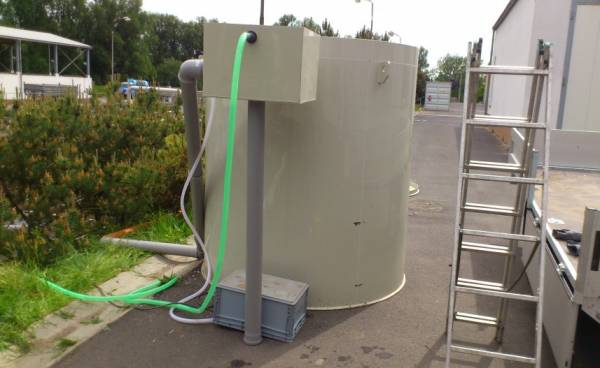
Assessment
Aim no. 1
Verification of improved equalizing ability of sludge suspension and verification of the nitrification efficiency increase.
The following diagram shows an excellent equalizing ability. Although there are apparent fluctuations of amount of ammonia nitrogen at the inflow, the outflow is exceptionally stable. The fluctuations at the inflow are caused besides other things by irregular operation of the centrifuge.
Increased values at the outflow in the period between 10 – 14 July are caused by torrential rains, which caused a minor accident affecting the pilot model as well.
Efficiency of removal NH4-N is also very satisfactory, 98,7% - 99,3%. Very stable values at the outflow are supposable according to the development shown in the diagram.
Diagram No. 1 values of NH-N inflow and outflow4-N inflow and outflow
Application of LEVAPOR carriers into an activation tank of the WWTP pilot model.
Aim no. 2
With regards to construction of biocarriers (their thickness and material), denitrification function will be verified.
Denitrification function of the carries is proven as well. Chart no 2 shows values of total nitrogen at the inflow and outflow. Despite increasing inflow curve, the values at the outflow are still decreasing. This phenomenon could be observed in most of the applications with LEVAPOR carriers. It is necessary to regulate the amount of O 2 which is delivered to sludge suspension in order to reach an optimal denitrification function.
For your reference, in the following chart there are listed temepratures and gradual reduction of delivered O2 in activation of the pilot model.
| Date | Temperature °C | O2 mg/l |
|---|---|---|
| 22. 7. | 21,0 | 8,4 |
| 23. 7. | 24,3 | 8,3 |
| 24. 7. | 21,1 | 7,4 |
| 25. 7. | 21,1 | 7,0 |
| 26. 7. | 22,1 | 6,0 |
| 27. 7. | 22,1 | 6,4 |
| 28. 7. | 23,1 | 6,4 |
| 29. 7. | 23,5 | 4,4 |
Graf č.2: Values of N totally in mg/l
Aim č. 3
Increase of total sludge concentration in biological treatment and the sludge age increase as well; reduction superfluous sludge production.
Monitored values confirming characteristics of activated sludge in the polit model are shown in chart no. 3.
The activated sludge sediments well and quickly after mixing. The sedimentation is much quicker in comparison with the WWTP.
The supernatant is clear, imperceptibly yellowish, without smell. From the point of view of microbiology, in the sludge rod-shaped bacteria predominate, filamentous bacteria occur only sporadically. Present species of infusorians indicate very good function of the pilot model. Morphology of the sludge flocks is very positive, the size of the flocks is optimal, their shape is uneven with a compact and consistent structure.
Sludge parameters, efficiency in activation process, nitrogen balance and other parameters of treated water will get better during balanced load with respect to proved increase of sludge age (27 June – 18 July: the sludge age 77 days compared to 12,4 day in the WWTP).
Diagram no. 3: Assessment of activated sludge
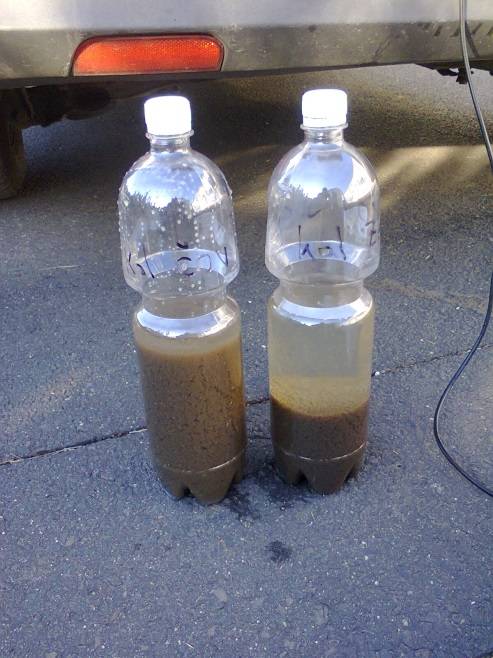
Comparison of sedimentation characteristics of the sludge
- LEVAPOR carriers will be applied into both biological lines,
- Retention mechanism will be added into inlets and outlets in activation tanks
(this mechanism prevents biocarriers from leaving the particular tanks) - put regenerations out of operation (the tank may be used for accumulation of waters from sludge management)
- connect the pipeline of return sludge, which is loosely bedded in a channel, directly into the denitrification
Conclusion:
1) The above mentioned data showed that all the aims of the experiment were achieved with maximum efficiency.
2) Despite considerable fluctuation at the inflow concentrations of TN, we achieved stable outflow values without observable negative effect of shock load, which confirms our previous excellent experience.
3) The results proved advantages of biofim technology and showed, that application of LEVAPOR carriers provides long-term solution with exceptionally low acquisition and operational costs.


